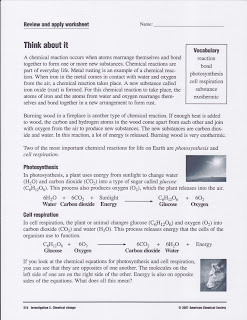ESSENTIAL QUESTION: How do scientists think life continues to change on Earth?
RELEVANCE: Do people really change?
NGSSS: SC.912.L.15.13; MAFS.912.N-Q.1.1; LAFS.910.SL.1.1
LEARNING OBJECTIVES: Students will be able to:
-identify the conditions required for natural selection.
-relate the conditions required for natural selection to differential reproductive success.
-Continue Journey To Mars Project.
BELL RINGER - How the zebra got its stripes cloze activity
VOCABULARY: adaptation, adaptive radiation, ancestor, artificial selection, bottleneck, coevolution, convergent evolution, directional selection, disruptive selection, evolution, extinction, fitness, founder effect, gene glow, gene pool, genetic drift, gradualism, mutation, natural selection, punctuated equilibrium, speciation, stabilizing selection
HOME LEARNING: HL 7 Natural Selection Cartoons
AGENDA
WHOLE GROUP
We reviewed the correlations and class tie-ins.
The bell ringer was to watch the video, powerpoint presentation, and then complete the handout, after having a shoulder buddy discussion on the question why do you think zebras have stripes? You can find the video, a video of the powerpoint presentation, and the handout below.
Movie presentation of the slide show. You can find the actual slide show by clicking the link
You may also want to watch the following videos:
Now, complete the handout below. There is one mistake on the handout that might not match the words in the box. Use the word changes instead of change in the environment.
Complete this as your bell ringer.
Home learning 7 was distributed and explained. You are to look at each cartoon and explain how it demonstrates natural selection. You can find the handout below.
Be sure to explain how each cartoon demonstrates natural selection.
Students reviewed the last exam by getting into small groups and discussing the answers with team mates. We then reviewed orally the entire exam.
WE reviewed the cacti and deer handout, which can be found below.
This is not home learning. We reviewed this in class to learn more about natural selection and adaptations.
Finally, students received the following pages and should read through them prior to next class so that we can have an informed discussion. The pages are listed below.
Please be prepared to discuss this next class session.
SMALL GROUP/INDEPENDENT PRACTICE/DI
Students who complete work early should go to Edgenuity and work on the topics they received less than 70% from the last exam
HOTS:
-How does Darwin address the uncertainties surrounding his theory of descent with modification? What do his methods reveal about the nature of scientific inquiry?
-Does Darwin’s theory of natural selection suggest an optimistic or a pessimistic view of the world?
EXIT STRATEGY:
Three things I learned, two things I found interesting, one question I still have.






